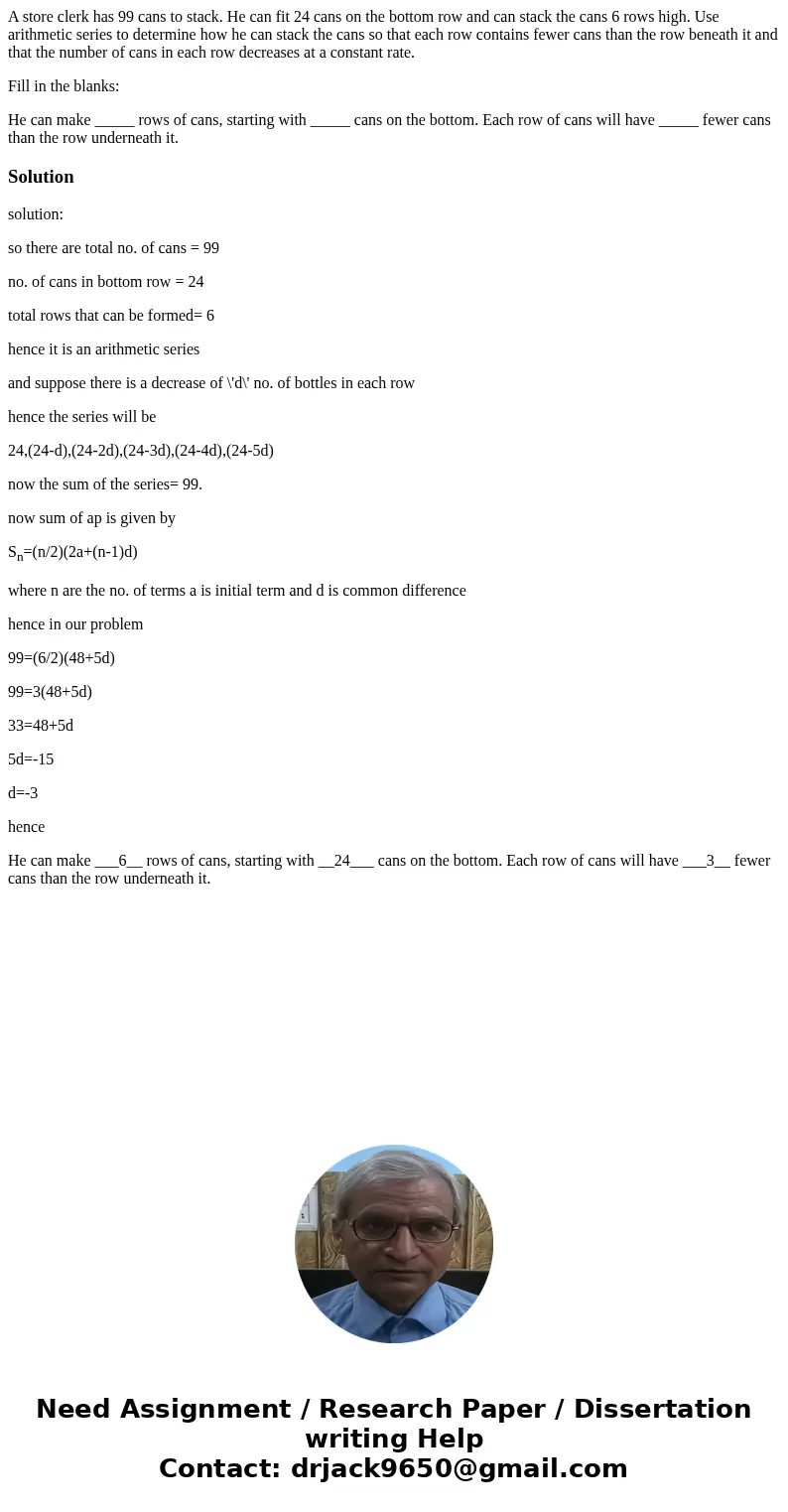A store clerk has 99 cans to stack He can fit 24 cans on the
A store clerk has 99 cans to stack. He can fit 24 cans on the bottom row and can stack the cans 6 rows high. Use arithmetic series to determine how he can stack the cans so that each row contains fewer cans than the row beneath it and that the number of cans in each row decreases at a constant rate.
Fill in the blanks:
He can make _____ rows of cans, starting with _____ cans on the bottom. Each row of cans will have _____ fewer cans than the row underneath it.
Solution
solution:
so there are total no. of cans = 99
no. of cans in bottom row = 24
total rows that can be formed= 6
hence it is an arithmetic series
and suppose there is a decrease of \'d\' no. of bottles in each row
hence the series will be
24,(24-d),(24-2d),(24-3d),(24-4d),(24-5d)
now the sum of the series= 99.
now sum of ap is given by
Sn=(n/2)(2a+(n-1)d)
where n are the no. of terms a is initial term and d is common difference
hence in our problem
99=(6/2)(48+5d)
99=3(48+5d)
33=48+5d
5d=-15
d=-3
hence
He can make ___6__ rows of cans, starting with __24___ cans on the bottom. Each row of cans will have ___3__ fewer cans than the row underneath it.

 Homework Sourse
Homework Sourse